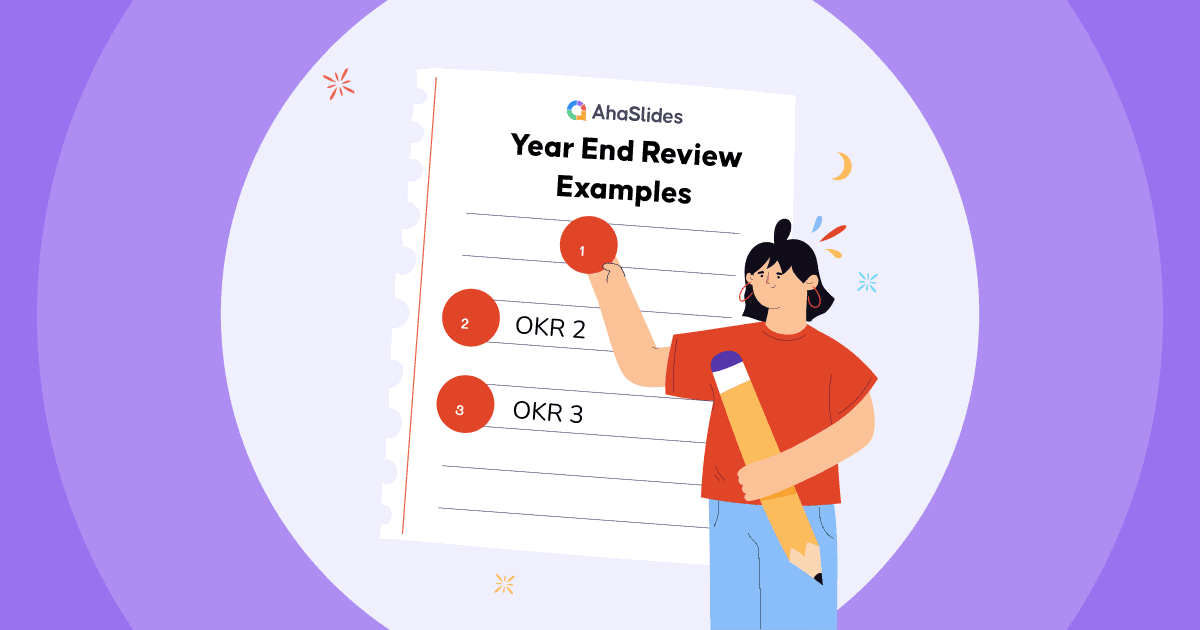Դուք երբևէ հայտնվե՞լ եք այնպիսի իրավիճակում, երբ ստիպված եք եղել սակարկել մեքենայի գնի շուրջ, բանակցել աշխատավարձի բարձրացման շուրջ կամ նույնիսկ սակարկել փողոցային վաճառողի հետ հուշանվերի համար։ Եթե այո, ապա դուք զբաղվել եք... բաշխիչ սակարկություն, հիմնարար բանակցային ռազմավարություն, որը կենտրոնանում է ֆիքսված ռեսուրսի բաժանման վրա:
Այս բլոգում մենք կուսումնասիրենք, թե ինչ է բաշխողական բանակցությունը, դրա առօրյա օրինակները և թե ինչպես է այն տարբերվում ինտեգրատիվ բանակցություններից: Մենք նաև կանդրադառնանք այն հիմնական ռազմավարություններին և մարտավարություններին, որոնք կարող են օգնել ձեզ դառնալ ավելի արդյունավետ բանակցող բաշխողական իրավիճակներում:
Բովանդակություն
- Ի՞նչ է բաշխված սակարկությունը:
- Բաշխիչ սակարկություն ընդդեմ ինտեգրատիվ սակարկությունների
- Բաշխիչ սակարկությունների օրինակներ
- Բաշխված սակարկությունների ռազմավարություն և մարտավարություն
- Հիմնական տուփեր
- Հաճ. տրվող հարցեր

Խորհուրդներ ավելի լավ ներգրավվածության համար

Փնտրու՞մ եք ավելի շատ զվարճանալ հավաքների ժամանակ:
Հավաքեք ձեր թիմի անդամներին AhaSlides-ում զվարճալի վիկտորինայի միջոցով: Գրանցվեք AhaSlides ձևանմուշների գրադարանից անվճար վիկտորինան անցնելու համար:
🚀 Ձեռք բերեք անվճար վիկտորինան ☁️
Ի՞նչ է բաշխված սակարկությունը:
Բաշխված սակարկությունը բանակցային ռազմավարություն է, որտեղ երկու կամ ավելի կողմեր նպատակ ունեն միմյանց միջև բաժանել ֆիքսված կամ սահմանափակ ռեսուրս: Մտածեք դրա մասին որպես մի սցենար, որտեղ դուք պետք է պիցցան բաժանեք կտորների, և բոլորն ուզում են ավելի մեծ կտոր: Բաշխիչ սակարկությունների ժամանակ գաղափարն այն է, որ առավելագույնի հասցնեք կարկանդակի ձեր մասնաբաժինը` միաժամանակ փորձելով ստանալ հնարավոր լավագույն գործարքը ձեզ համար:
Պարզ ասած՝ սա նման է պարան քաշելուն, թե ով ինչ է ստանում։ Այս տեսակի սակարկությունը հաճախ ներառում է շահերի մրցակցություն, որտեղ այն, ինչ մեկ կողմը շահում է, մյուսը կարող է կորցնել։ Սա հաղթանակ-պարտություն իրավիճակ է, որտեղ որքան շատ է շահում մեկ կողմը, այնքան քիչ է մնում մյուսի համար։
Բաշխիչ սակարկություն ընդդեմ ինտեգրատիվ սակարկությունների
Բաշխիչ սակարկություն ամեն ինչ ձեր բաժնեմասը պահանջելու մասին է, օրինակ՝ շուկայում գնի շուրջ սակարկելը կամ ձեր գործատուի հետ աշխատավարձի բարձրացման շուրջ բանակցելը: Որքան շատ եք ստանում, այնքան քիչ է ստանում մյուս կողմը:
Ինտեգրատիվ սակարկություն, մյուս կողմից, ավելի շատ նման է շուկայի ընդլայնմանը: Պատկերացրեք, որ դուք և ձեր ընկերը ունեք մեկ պիցցա, բայց դուք նաև ունեք լրացուցիչ հավելումներ՝ պեպպերոնի, սունկ և պանիր: Գոյություն ունեցող պիցցայի համար կռվելու փոխարեն, դուք միասին աշխատում եք ավելի լավը ստեղծելու համար՝ ավելացնելով ձեր ցանկությամբ լցոնումներ: Ինտեգրատիվ սակարկությունը շահեկանորեն շահող մոտեցում է, որտեղ երկու կողմերն էլ համագործակցում են ստեղծագործ լուծումներ գտնելու համար, որոնք մեծացնում են ընդհանուր արժեքը:
Այսպիսով, մի խոսքով, բաշխիչ սակարկությունը վերաբերում է ֆիքսված կարկանդակը բաժանելուն, մինչդեռ ինտեգրատիվ սակարկումը կարկանդակն ավելի մեծացնելուն է՝ փոխշահավետ լուծումներ գտնելու միջոցով:

Բաշխիչ սակարկությունների օրինակներ
Բաշխիչ բանակցություններն ավելի լավ հասկանալու համար, եկեք ուսումնասիրենք մի քանի իրական օրինակներ, որտեղ այս բանակցային ռազմավարությունը կիրառելի է.
#1 – Աշխատավարձի վերաբերյալ բանակցություններ
Պատկերացրեք, որ հարցազրույցի ժամանակ քննարկում եք ձեր աշխատավարձը պոտենցիալ գործատուի հետ։ Դուք ցանկանում եք ավելի բարձր աշխատավարձ, իսկ նա՝ վերահսկել աշխատուժի ծախսերը։ Այս իրավիճակը ներկայացնում է բաշխողական բանակցություն, որտեղ դուք երկուսդ էլ մրցում եք ֆիքսված ռեսուրսի՝ ձեր պաշտոնի համար ընկերության բյուջեի համար։ Եթե հաջողությամբ բանակցեք, կստանաք ավելի բարձր աշխատավարձ, բայց դա կարող է գալ այլ արտոնությունների կամ արտոնությունների հաշվին։
#2 – Մեքենայի գնում
Երբ դուք այցելում եք դիլերային կենտրոն՝ մեքենա գնելու համար, հավանաբար կմասնակցեք բաշխողական բանակցությունների: Դուք ցանկանում եք ստանալ հնարավոր ամենացածր գինը, մինչդեռ վաճառողը ցանկանում է առավելագույնի հասցնել իր շահույթը: Բանակցությունները կենտրոնանում են մեքենայի գնի վրա, և երկու կողմերին էլ բավարարող միջին դիրք գտնելը կարող է դժվար լինել:
#3 – Ամուսնալուծության հետ կապված վեճեր
Երբ զույգն անցնում է ամուսնալուծության, ակտիվների բաժանումը կարող է լինել բաշխված սակարկության դասական օրինակ: Երկու կողմերն էլ շահագրգռված են հնարավորինս շատ բան ստանալ ընդհանուր ակտիվներից, ինչպիսիք են գույքը, խնայողությունները և ներդրումները: Բանակցությունը նպատակ ունի արդարացիորեն բաժանել այդ ռեսուրսները՝ հաշվի առնելով իրավական դաշտը և յուրաքանչյուր ամուսնու շահերը:
Այս օրինակներից յուրաքանչյուրում բաշխիչ սակարկությունը ներառում է կողմերին, որոնք ձգտում են առավելագույնի հասցնել իրենց մասնաբաժինը սահմանափակ կամ սահմանափակ ռեսուրսներում:
Բաշխված սակարկությունների ռազմավարություն և մարտավարություն

Բաշխիչ բանակցություններում, որտեղ ռեսուրսները սահմանափակ են և մրցակցային, լավ մտածված ռազմավարություն ունենալը և արդյունավետ մարտավարության կիրառումը կարող են մեծ տարբերություն ստեղծել ցանկալի արդյունքի հասնելու համար։ Եկեք խորանանք այս տեսակի բանակցություններում օգտագործվող հիմնական ռազմավարությունների և մարտավարությունների մեջ։
#1 – Հիմնեք ձեր դիրքը
Առաջին առաջարկը հաճախ ծառայում է որպես խարիսխ՝ ազդելով բանակցությունների ուղղության վրա։ Եթե դուք վաճառողն եք, սկսեք բարձր գնից։ Եթե գնորդն եք, սկսեք ցածր առաջարկից։ Սա սահմանում է տոնը և տեղ է թողնում զիջումների համար։
#2 – Սահմանեք ձեր ամրագրման կետը
Ձեր ամրագրման կետը՝ ամենացածր կամ ամենաբարձր ընդունելի առաջարկը, որը դուք պատրաստ եք ընդունել, պահեք ձեզ համար։ Այն չափազանց շուտ բացահայտելը կարող է առավելություն տալ մյուս կողմին՝ իմանալով ձեր սահմանները։
#3 – Գնացեք ռազմավարական զիջումների
Զիջումների գնալիս դա արեք ընտրովի և ռազմավարական: Խուսափեք շատ արագ տալուց: Աստիճանական զիջումները կարող են ճկունության ազդանշան տալ՝ պահպանելով ձեր դիրքը:
#4 – Օգտագործեք թրթռումը
Երբ առաջարկվում է, աշխատիր ֆլինչի մարտավարությունը. Արձագանքեք զարմանքով կամ մտահոգությամբ, որպեսզի մյուս կողմը կասկածի տակ դնի իր առաջարկի արդարացիությունը: Սա կարող է նրանց դրդել բարելավել իրենց առաջարկը:
#5 – Տեղեկատվությունը ուժ է
Մանրակրկիտ ուսումնասիրեք թեման և մյուս կողմի դիրքորոշումը: Գիտելիքը արժեքավոր զենք է բաշխողական բանակցություններում: Որքան շատ տեղեկատվություն ունեք, այնքան ավելի լավ եք պատրաստված արդյունավետ բանակցելու համար:
#6 – Ստեղծեք վերջնաժամկետներ
Ժամանակի սղությունը կարող է արժեքավոր մարտավարություն լինել։ Օրինակ, եթե դուք բանակցություններ եք վարում պայմանագրի շուրջ, գործարքի կնքման համար վերջնաժամկետ սահմանելը կարող է մյուս կողմին դրդել ավելի արագ որոշումներ կայացնել, հնարավոր է՝ ձեր օգտին։

#7 – Օգտագործել սահմանափակ լիազորություններ
Պնդեք, որ դուք սահմանափակ լիազորություններ ունեք որոշումներ կայացնելու համար: Սա կարող է հզոր մարտավարություն լինել, քանի որ այն տպավորություն է ստեղծում, որ դուք վերջնական որոշում կայացնողը չեք: Դա կարող է խրախուսել մյուս կողմին ավելին առաջարկել՝ ավելի բարձր լիազորություններ ունեցող անձի հավանությունը ստանալու համար:
#8 – Լավ ոստիկան, վատ ոստիկան
Եթե դուք բանակցություններ եք վարում որպես թիմ, դիտարկեք «լավ ոստիկան, վատ ոստիկան» մոտեցումը։ Մեկ բանակցողը կոշտ դիրքորոշում է ընդունում, մինչդեռ մյուսը թվում է ավելի հաշտվողական։ Սա կարող է շփոթություն ստեղծել և խրախուսել զիջումները։
#9 – Հեռացեք, երբ անհրաժեշտ է
Պատրաստ եղեք հեռանալ բանակցություններից, եթե պարզ լինի, որ մյուս կողմը պատրաստ չէ բավարարել ձեր նվազագույն պահանջները: Երբեմն սեղանից դուրս գալը ամենաուժեղ մարտավարությունն է:
Հիմնական տուփեր
Բաշխիչ բանակցությունները արժեքավոր հմտություն են, որը պետք է ունենաք ձեր զինանոցում: Անկախ նրանից, թե դուք սակարկում եք լու շուկայում, բանակցում եք աշխատավարձի բարձրացման համար, թե կնքում եք գործարք, բաշխիչ բանակցությունների ռազմավարություններն ու մարտավարությունը հասկանալը կարող է օգնել ձեզ ապահովել լավագույն հնարավոր արդյունքը ձեզ կամ ձեր կազմակերպության համար:
Եվ մի մոռացեք, որ անկախ նրանից՝ դուք կատարելագործում եք ձեր բանակցային հմտությունները, ներկայացնում ազդեցիկ ներկայացումներ, թե մարզում եք վաճառքի թիմերին՝ հաջողության հասնելու համար, հաշվի առեք ներուժը։ AhaSlides- ը աջակցել ձեր ճանապարհորդությանը դեպի հաջողություն: Բարձրացրեք ձեր բովանդակությունը հաջորդ մակարդակի մեր միջոցով ինտերակտիվ ձևանմուշներ որոնք բավարարում են տարբեր կարիքները և ոլորտները: Ձեր հանդիսատեսը շնորհակալություն կհայտնի ձեզ:
Հաճախակի տրվող հարցեր
Ի՞նչ է բաշխումն ընդդեմ ինտեգրացիոն սակարկության:
Բաշխիչ սակարկություն. Սա նման է կարկանդակ բաժանելուն։ Կողմերը մրցում են ֆիքսված ռեսուրսի համար, և այն, ինչ մեկ կողմը շահում է, մյուսը կարող է կորցնել։ Սա հաճախ դիտվում է որպես հաղթանակ-պարտություն հարաբերակցություն։
Ինտեգրատիվ սակարկություն. Պատկերացրեք սա որպես «կարկանդակի» ընդլայնում: Կողմերը համագործակցում են՝ գտնելու ստեղծագործական լուծումներ, որոնք կբարձրացնեն բանակցվող ռեսուրսների ընդհանուր արժեքը: Սովորաբար դա փոխադարձ շահում է:
Արդյո՞ք բաշխիչ սակարկությունները շահեկան են:
Բաշխիչ բանակցությունները, որպես կանոն, երկու կողմերի համար էլ շահեկան չեն։ Այն հաճախ հանգեցնում է հաղթանակ-պարտություն սցենարի, որտեղ մեկ կողմի շահը մյուս կողմի կորուստն է։
Ref: Տնտեսական Times | Ամերիքան Էքսպրես քարտ








